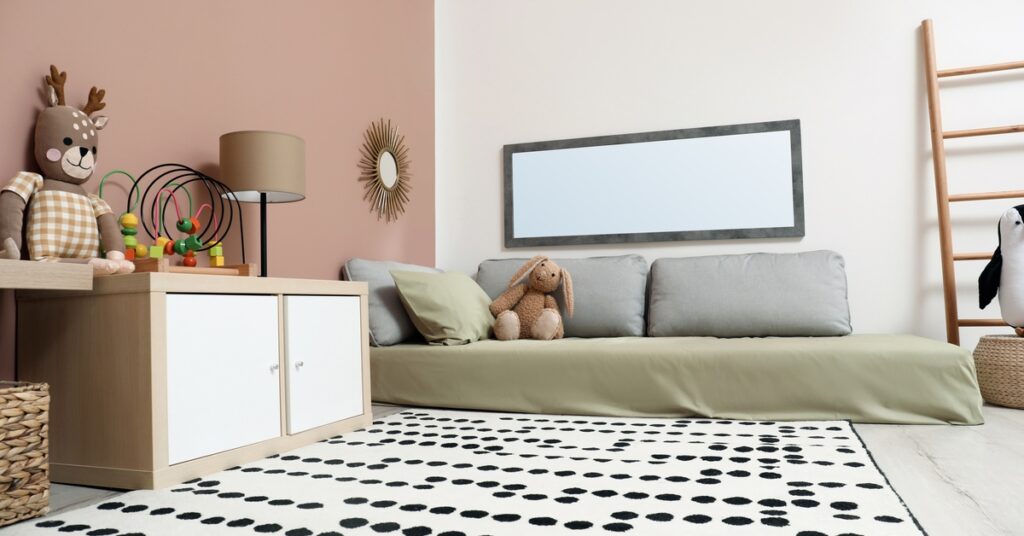A quiet, minimalist bedroom might look peaceful, but for an energetic child, it can fall flat. Montessori spaces aren’t built to restrict movement; they’re meant to support it with purpose. The challenge, though, is designing a room that invites calm without forcing stillness.
If you’ve ever wondered what to include in a Montessori bedroom for active kids, here’s where to begin.
Low, Accessible Furniture
Start with the basics. A floor bed gives kids the freedom to get up and down safely on their own. Pair that with open-backed shelves and a freestanding wardrobe so they can access clothes, books, or toys without needing help.
The goal isn’t to clutter the space but to give it a clear flow. One low shelf near the bed and one near the play zone is usually enough. Leave a 2- to 3-foot buffer of open floor around each piece so there’s room to crawl, scoot, or run.
Movement-Friendly Floor Space
Movement needs to be built into space, not just allowed. A thick cotton rug with nonslip backing, a couple of tumbling mats, and a floor cushion or pouf can help absorb all that kid energy without overstimulating the room visually.
To keep things fresh, rotate movement elements every 10 days. Swapping in a wedge pillow, soft tunnel, or small stepping stones can keep their interest without changing the layout. These kinds of shifts support gross motor skill activities without needing a full overhaul.
Climbing and Balance Features
Kids who climb furniture aren’t misbehaving; they’re looking for challenge and stimulation. Offering safe, structured outlets like a Pikler triangle, low balance beam, or wall-mounted ladder can satisfy that need while protecting your home (and your nerves).
Wall-mounted climbing holds are another smart option, especially in rooms with limited floor space. There’s no need for a floor-to-ceiling wall to set up the perfect at-home climbing route. It all comes down to smart placement, proper spacing, and scaling the difficulty to match your child’s age and ability. Whatever features you choose, make sure they’re securely anchored and paired with a cushioned mat to keep things safe and fun.
Purposeful Play Materials
Every item in the room should serve a purpose and be easy to reach. Store toys, puzzles, books, or games on low shelves, no more than four per shelf. This encourages self-guided play and limits overwhelm.
Natural materials like wood, cotton, and wool bring warmth to the space and support sensory engagement. Add a small basket with egg shakers, a xylophone, or crayons with a pad of unlined paper. A few open-ended tools go further than a pile of plastic toys.
Thoughtful Stillness
As you think about what to include in your active kids’ Montessori bedrooms, don’t overlook the in-between spaces, the quiet corners, the soft transitions, and the places where nothing is happening. That pause in the layout might give your child enough room to reset, refocus, or breathe.
In a room designed for movement, stillness has its place, too.





